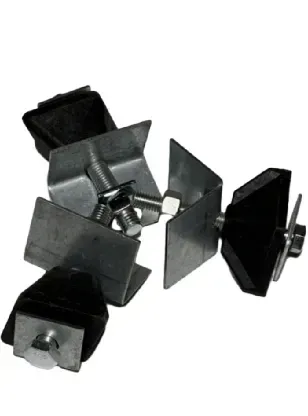loading...
- No. 9, Xingyuan South Street, Dongwaihuan Road, Zaoqiang County, Hengshui, Hebei, China
- admin@zjcomposites.com
- +86 15097380338
- Welcome to visit our website!
Advancements in Composite Materials for Durable Fibre Reinforced Plastic Storage Solutions
The Advantages of Fiber-Reinforced Plastic Tanks
In recent years, the demand for advanced materials in various industries has surged significantly. Among these materials, fiber-reinforced plastic (FRP) has emerged as a leading choice for manufacturing tanks and containers. This innovative composite material offers numerous advantages over traditional materials, making it an ideal option for a variety of applications.
Understanding Fiber-Reinforced Plastic
Fiber-reinforced plastic is composed of a polymer matrix reinforced with fibers, typically glass, carbon, or aramid. This combination results not only in enhanced strength but also in a markedly reduced weight compared to standard materials such as metals or concrete. The fibers contribute tensile strength, while the plastic binder provides compressive strength, thereby yielding a material that can withstand harsh environmental conditions.
Corrosion Resistance
One of the most significant advantages of FRP tanks is their exceptional resistance to corrosion. Unlike metal tanks that can develop rust and degrade when exposed to moisture, chemicals, and various corrosive environments, FRP tanks are immune to these issues. This characteristic is particularly beneficial in industries such as chemical processing, wastewater treatment, and food production, where tanks are regularly exposed to aggressive substances.
Lightweight and Cost-Effective
The lightweight nature of FRP tanks contributes to ease of installation and transportation. This feature is especially advantageous in scenarios where heavy lifting equipment might not be available or where mobility is a concern. Furthermore, their lightweight composition can translate to savings in shipping costs and installation labor, making them a cost-effective alternative to heavier materials.
Durability and Longevity
FRP tanks exhibit a remarkable lifespan, often exceeding that of traditional materials. Their inherent resistance to environmental stressors translates to lower maintenance costs over time. While metal tanks may require regular inspections and coatings to prevent corrosion, FRP tanks typically demand minimal upkeep, allowing companies to allocate resources more efficiently.
fibre reinforced plastic tanks

Design Flexibility
Another notable feature of fiber-reinforced plastic tanks is their design versatility. FRP can be molded into various shapes and sizes, accommodating unique specifications according to specific needs. This adaptability enables engineers and designers to create custom solutions tailored to highly specialized applications, a flexibility that traditional materials often lack.
Thermal Insulation
FRP tanks also provide superior thermal insulation properties. Their construction helps regulate temperature changes, which is particularly crucial in applications where maintaining a stable environment is critical. This insulation reduces the risk of thermal stress that can lead to structural failure or compromise the integrity of the materials contained within the tank.
Sustainability
In today’s eco-conscious world, the sustainability aspect of fiber-reinforced plastic is increasingly relevant. Many manufacturers are focusing on producing FRP using recyclable materials and processes that minimize environmental impact. Additionally, since FRP tanks have a longer lifespan compared to traditional options, they contribute to less waste and lower resource consumption over time.
Applications Across Industries
The versatility of fiber-reinforced plastic tanks makes them suitable for a wide range of industries. In the chemical sector, they are used to store hazardous materials safely. In agriculture, FRP tanks are utilized for irrigation systems and water storage. Furthermore, the food and beverage industry employs these tanks for fermentation and storage processes, capitalizing on their hygienic properties and low reactivity.
Conclusion
The benefits of fiber-reinforced plastic tanks are vast and transformative. Their resistance to corrosion, lightweight nature, durability, design flexibility, and sustainability make them an excellent choice for various industrial applications. As industries continue to innovate and seek out more efficient materials, FRP tanks stand out as a reliable solution. Companies can enhance their operational efficiency, reduce costs, and minimize their environmental footprint by adopting this advanced material technology. In a world where material performance and sustainability are paramount, fiber-reinforced plastic tanks undoubtedly represent the future of storage solutions.
-
The Rise of FRP Profiles: Strong, Lightweight, and Built to LastNewsJul.14,2025
-
SMC Panel Tanks: A Modern Water Storage Solution for All EnvironmentsNewsJul.14,2025
-
GRP Grating: A Modern Solution for Safe and Durable Access SystemsNewsJul.14,2025
-
Galvanized Steel Water Tanks: Durable, Reliable, and Ready for UseNewsJul.14,2025
-
FRP Mini Mesh Grating: The Safer, Smarter Flooring SolutionNewsJul.14,2025
-
Exploring FRP Vessels: Durable Solutions for Modern Fluid HandlingNewsJul.14,2025
-
GRP Structures: The Future of Lightweight, High-Performance EngineeringNewsJun.20,2025
